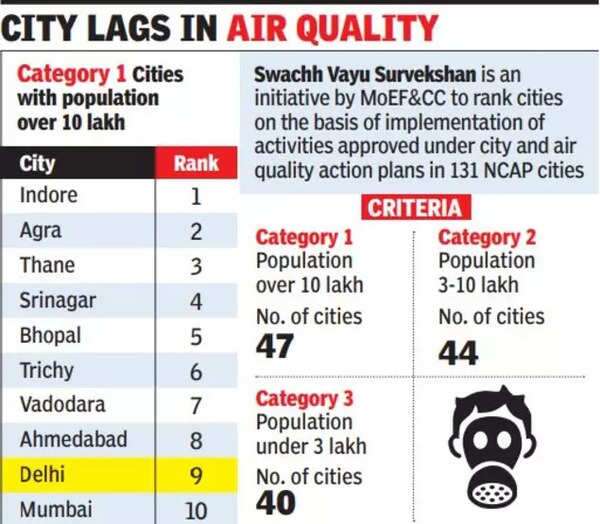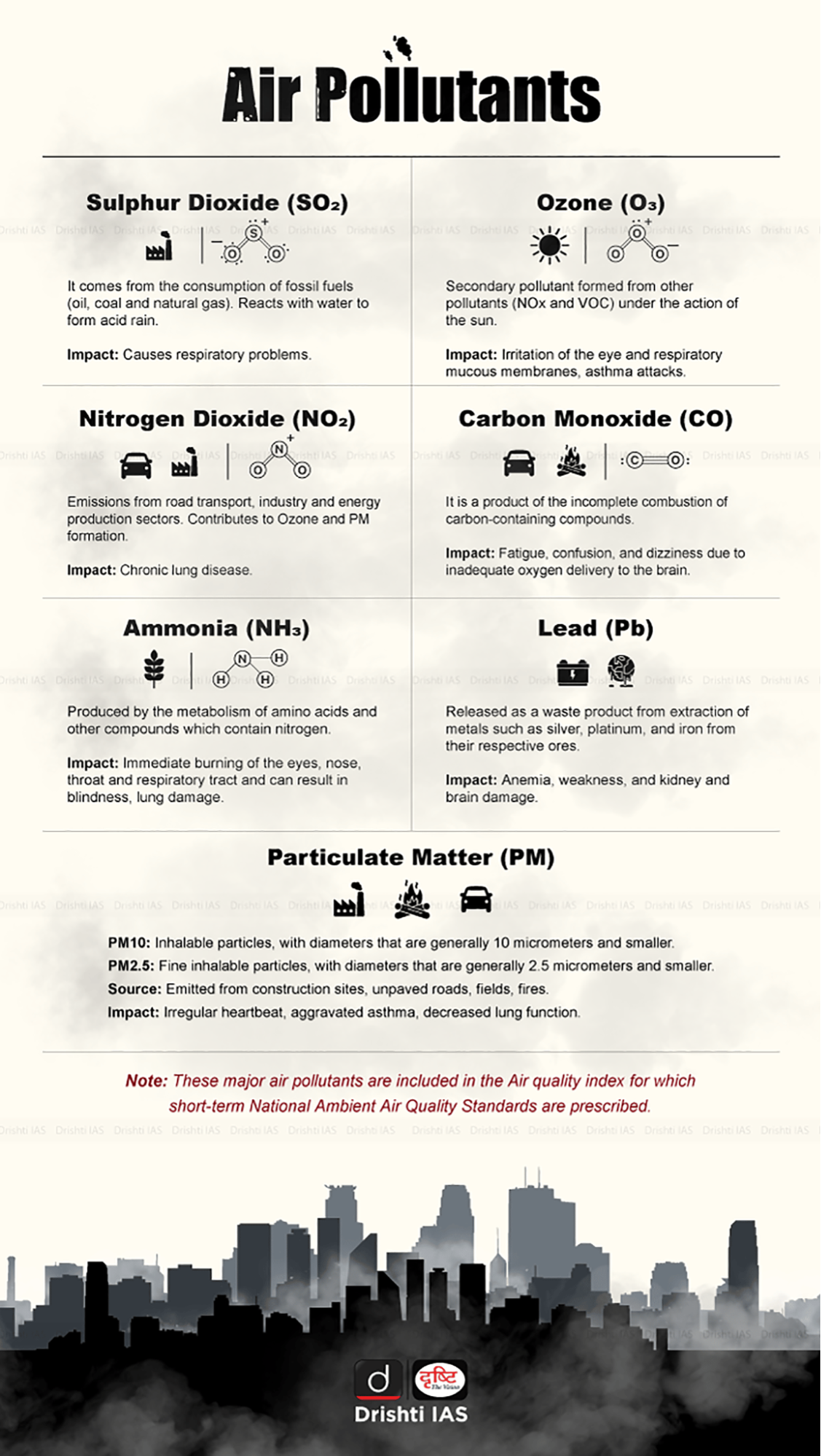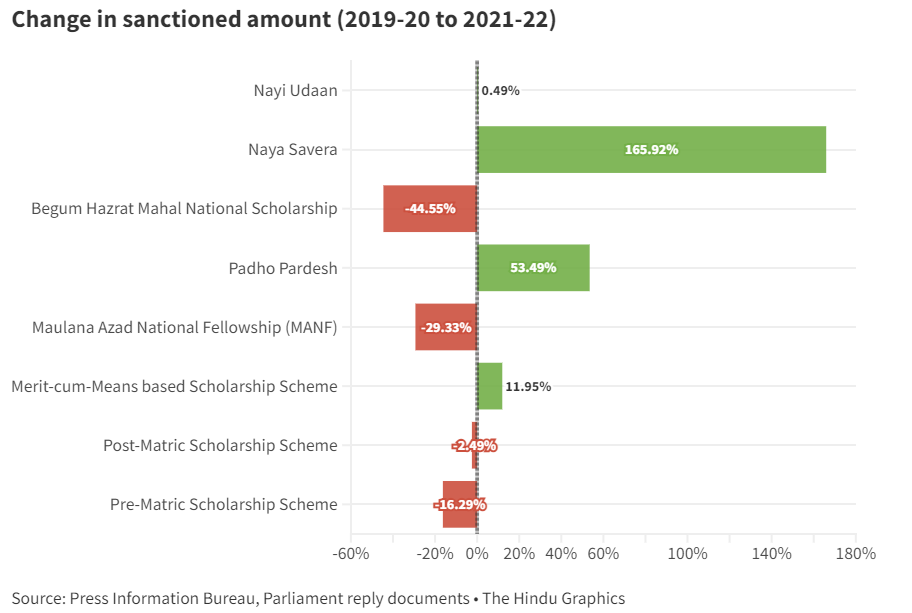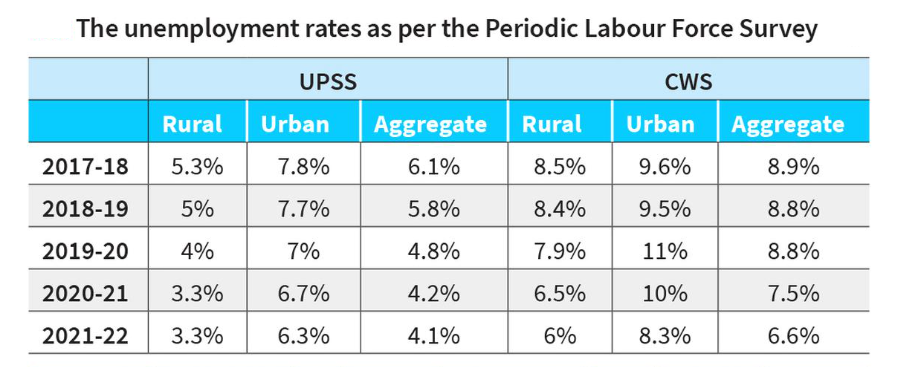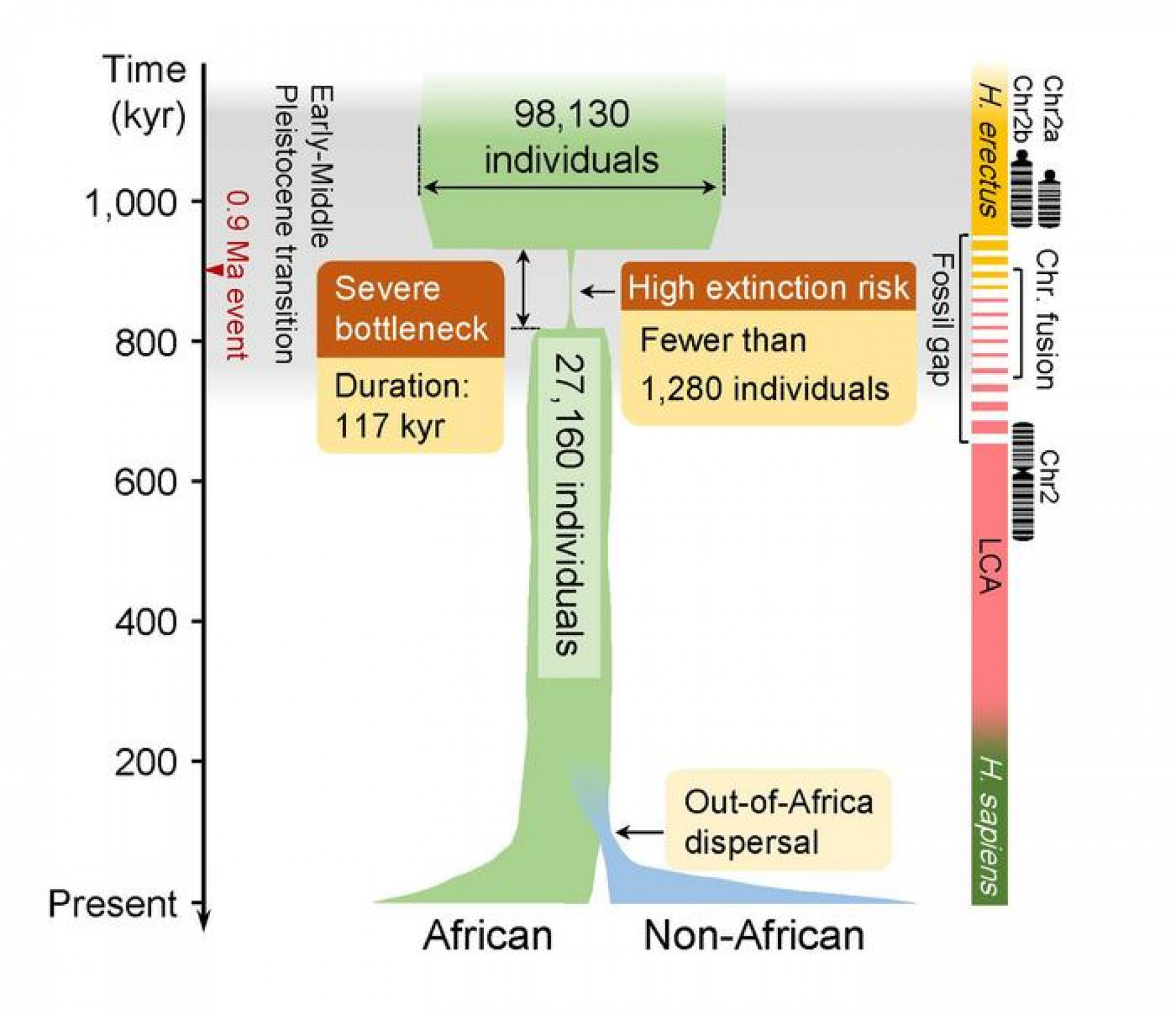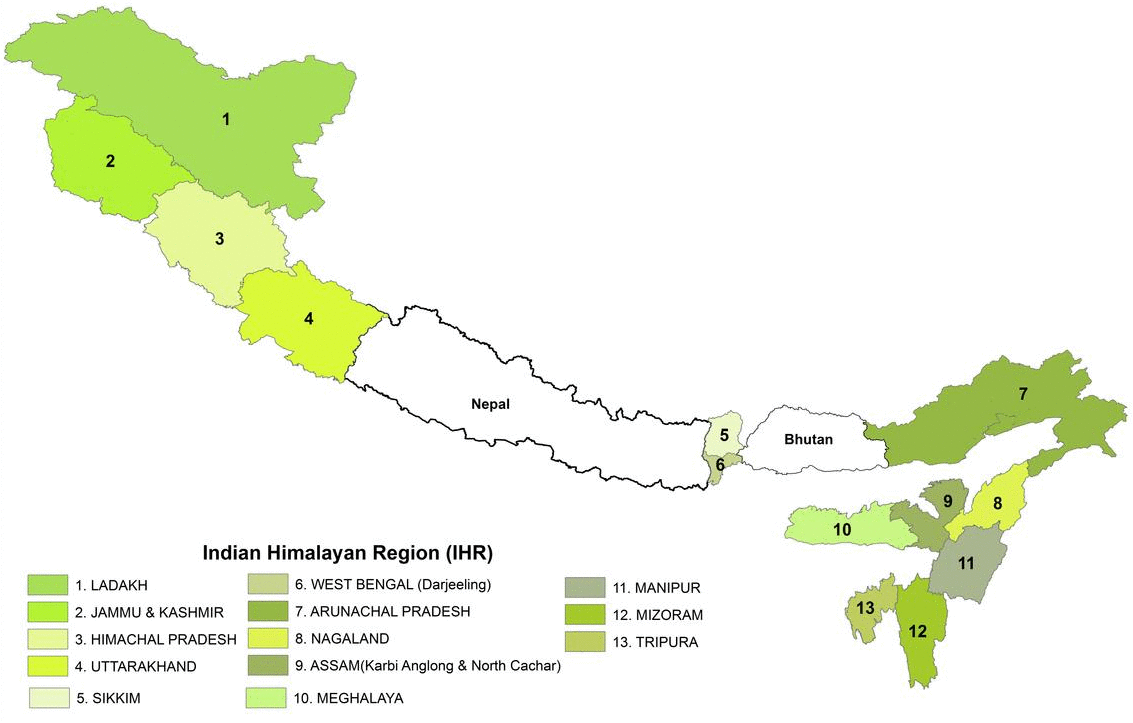Biodiversity & Environment
Global Push to Criminalize Ecocide
For Prelims: Ecocide, Maya sites, United Nations' International Criminal Court, Rome Statute, Convention on Biological Diversity, United Nations Framework Convention on Climate Change, Convention on International Trade in Endangered Species of Wild Fauna and Flora, Environment Protection Act 1986, Wildlife Protection Act 1972, Compensatory Afforestation Fund Act, 2016 (CAMPA).
For Mains: Present Status of Ecocide Acknowledgment in India, Arguments in Favour and Against Criminalising Ecocide
Why in News?
The controversial Maya train project in Mexico aims to link tourists with historic Maya sites, sparking concerns over its potential environmental and cultural impact.
- The debate surrounding this project brings into focus the concept of "ecocide" and the growing global movement to criminalize environmental destruction.
What is an Ecocide?
- About:
- Ecocide, derived from Greek and Latin, translates to 'killing one's home' or 'environment'.
- Although there is currently no universally recognized legal description of ecocide, a group of lawyers convened by an NGO named Stop Ecocide Foundation in June 2021 crafted a definition that would place environmental devastation within the same realm as crimes against humanity.
- According to their proposal, ecocide is defined as "unlawful or reckless actions carried out with the awareness that there exists a substantial probability of causing severe and either extensive or enduring harm to the environment."
- Historical Context:
- In 1970, biologist Arthur Galston was the first to draw a connection between environmental devastation and genocide (which is recognised as an international crime).
- He made this link when addressing the U.S. military's utilization of Agent Orange, an herbicide, during the Vietnam War.
- Swedish Prime Minister Olof Palme also used this concept in a speech at the United Nations.
- He cautioned that uncontrolled industrialization could lead to irreversible harm to the environment.
- In 2010, a British lawyer played a pivotal role by urging the United Nations' International Criminal Court (ICC) to officially acknowledge ecocide as an international crime.
- Currently, the Rome Statute of the ICC addresses four major offenses: genocide, crimes against humanity, war crimes, and the crime of aggression as a international crime.
- The provision related to war crimes is the sole statute that can hold a wrongdoer accountable for environmental destruction, but only if it is intentionally caused during times of armed conflict.
- In 1970, biologist Arthur Galston was the first to draw a connection between environmental devastation and genocide (which is recognised as an international crime).
What is the Present Status of Ecocide Acknowledgment in India?
- India has neither signed nor ratified the Rome Statute of the International Criminal Court and has not expressed any official position on the proposal to criminalize ecocide at the international level.
- However, India has ratified several international environmental treaties and conventions, such as the Convention on Biological Diversity, the United Nations Framework Convention on Climate Change and Convention on International Trade in Endangered Species of Wild Fauna and Flora.
- India has also enacted various national laws and policies to protect and conserve its environment, such as the Environment Protection Act 1986, the Wildlife Protection Act 1972, and Compensatory Afforestation Fund Act, 2016 (CAMPA).
- While some Indian court judgments have casually used the term 'ecocide,' the concept has not been formally integrated into Indian law.
- In the case of Chandra CFS and Terminal Operators Pvt. Ltd. v. The Commissioner of Customs and Ors 2015, the Madras High Court noted the continuous and unbridled activities of ecocide related to the removal of valuable timbers.
- The T.N. Godavarman Thirumulpad vs Union Of India & Ors 1995 case in the Supreme Court drew attention to the need to shift from an anthropocentric approach to an ecocentric approach for achieving environmental justice.
What are the Arguments in Favour of Criminalising Ecocide?
- Protecting the Environment as an End in Itself: Ecosystems are intricate networks of species and interactions that have evolved over millions of years.
- Protecting the environment as an end in itself recognizes the importance of preserving these ecosystems in their natural state to maintain their integrity and evolutionary potential.
- Ecocide laws fill a gap in environmental protection, recognizing the environment as an entity worthy of safeguarding.
- Intergenerational Justice: Advocates argue that ecocide can be seen as accumulating a "biodiversity debt" that future generations must repay.
- By recognizing ecocide as a crime, society acknowledges its obligation to leave a sustainable and habitable planet for posterity.
- Climate Change Mitigation: Addressing ecocide through criminal law serves as a vital complement to international climate agreements by directly targeting the root causes of climate change.
- Large-scale deforestation and uncontrolled fossil fuel extraction, all considered as ecocidal activities.
- Criminalizing ecocide adds a strong legal dimension to environmental protection, holding individuals and entities accountable for actions that harm the climate.
Note: In March 2023, the Intergovernmental Panel on Climate Change (IPCC) emphasized that global climate action remains inadequate. Activities such as widespread fossil fuel combustion, pollution through plastics and fertilizers in terrestrial and aquatic environments, and the loss of species collectively indicate a new geological epoch known as the Anthropocene.
- Expanding Global Recognition and Legal Action: Ecocide is already considered a crime in 11 countries, with 27 more contemplating similar legislation.
- Ecocide laws can also serve as powerful calls for justice, especially for low- and middle-income countries bearing the brunt of extreme weather events.
- Small nations like Vanuatu and Barbuda are urging the ICC to classify environmental crimes as international law violations.
- Ecocide laws can also serve as powerful calls for justice, especially for low- and middle-income countries bearing the brunt of extreme weather events.
What are the Arguments Against Criminalising Ecocide?
- Development vs. Environmental Protection: One key argument against criminalizing ecocide revolves around the tension between development and environmental protection.
- Critics argue that defining ecocide may inadvertently pit development goals against environmental conservation.
- For instance, the Great Nicobar Project in India faced criticism for potentially harming indigenous communities and biodiversity, while the government defended it as an initiative for "holistic development."
- Interference with Sovereignty: Some argue that criminalizing ecocide may infringe upon a nation's sovereignty.
- Countries may view such laws as encroachments on their ability to manage their own environmental policies and resources, leading to resistance or non-compliance.
- Chilling Effect on Scientific Research: Scientists and researchers could be deterred from conducting studies that involve environmental manipulation or experimentation due to the fear of potential legal repercussions.
- This could impede scientific progress and understanding of complex ecological systems.
- Efficacy and Enforcement Challenges: Critics question the effectiveness of criminalizing ecocide in deterring environmental harm.
- They argue that existing environmental regulations, when enforced rigorously, can be more effective than creating a new criminal framework that may be challenging to enforce.
Way Forward
- Environmental Protection as a Fundamental Imperative: Whether ecocide is criminalized or not, the paramount objective should always be the protection and preservation of the environment.
- Ecological Restoration Bonds: There is a need to introduce the concept of ecological restoration bonds.
- Companies involved in projects with significant environmental impact could be required to purchase these bonds as part of their licensing or permitting process.
- The funds from these bonds would be earmarked for ecological restoration in case of environmental harm, ensuring that the cost of restoration is borne by the responsible parties.
- Mandatory Environmental Education: There is a need to implement mandatory environmental education in schools and universities to raise awareness about environmental rights and responsibilities.
- This education would empower citizens to advocate for the environment and engage in discussions surrounding ecocide.
UPSC Civil Services Examination Previous Year Question (PYQ)
Prelims
Q. Consider the following statements: (2019)
The Environment Protection Act, 1986 empowers the Government of India to
- state the requirement of public participation in the process of environmental protection, and the procedure and manner in which it is sought
- lay down the standards for emission or discharge of environmental pollutants from various sources
Which of the statements given above is/are correct?
(a) 1 only
(b) 2 only
(c) Both 1 and 2
(d) Neither 1 nor 2
Ans: (b)
Mains
Q1. Environmental Impact Assessment studies are increasingly undertaken before a project is cleared by the Government. Discuss the environmental impacts of coal-fired thermal plants located at coal pitheads. (2014)
Q2. How does the draft Environment Impact Assessment (EIA) Notification, 2020 differ from the existing EIA Notification, 2006? (2020)
Q3. The most significant achievement of modern law in India is the constitutionalization of environmental problems by the Supreme Court. Discuss this statement with the help of relevant case laws. (2022)


Governance
Swachh Vayu Survekshan 2023 and NCAP
For Prelims: Swachh Vayu Survekshan 2023, Clean Air Survey, Central Pollution Control Board (CPCB), International Day of Clean Air for Blue Skies, National Clean Air Programme (NCAP), Initiatives to Ensure Cleaner Air, PM 2.5, PM 10, NAAQS, Air Pollution
For Mains: The problem of Air Pollution and Government Initiatives to tackle it
Why in News?
Recently, the awards for Swachh Vayu Survekshan (Clean Air Survey) 2023 were announced. The survey was conducted by the Central Pollution Control Board (CPCB).
Note:
- Every year, the International Day of Clean Air for Blue Skies is celebrated on 7 September to raise awareness and facilitate actions to improve air quality.
- It was declared so by the United Nations General Assembly (UNGA) in 2019.
- Theme for 4th International Day of Clean Air for Blue Skies (Swachh Vayu Diwas 2023) - “Together for Clean Air.”
What are the Key Findings about the SVS 2023?
- About:
- Swachh Vayu Survekshan (SVS) is a new initiative by the Ministry of Environment, Forest and Climate Change (MoEFCC) to rank cities on the basis of air quality and implementation of activities approved under the city action plan (NCAP) in 131 non-attainment cities.
- Cities are declared non- attainment if over a 5-year period they consistently do not meet the NAAQS for PM10 or NO2.
- The categorisation of cities has been based on the 2011 population census.
- Swachh Vayu Survekshan (SVS) is a new initiative by the Ministry of Environment, Forest and Climate Change (MoEFCC) to rank cities on the basis of air quality and implementation of activities approved under the city action plan (NCAP) in 131 non-attainment cities.
- Criteria: The cities were assessed on eight major points:
- Control of biomass
- Municipal solid waste burning
- Road dust
- Dust from construction and demolition waste
- Vehicular emissions
- Industrial emissions
- Public awareness
- improvement in PM10 concentration
- Performance:
- Top 3 cities under 1st category (million plus population): Indore followed by Agra and Thane.
- Worst Performers: Madurai (46), Howrah (45) and Jamshedpur (44)
- Bhopal ranked 5th and Delhi ranked 9th
- Worst Performers: Madurai (46), Howrah (45) and Jamshedpur (44)
- Top 3 cities under 2nd category (3-10 lakhs population): Amravati followed by Moradabad and Guntur.
- Worst Performers: Jammu (38), Guwahati (37) and Jalandhar (36)
- Top 3 cities under 3rd category (<3 lakhs population): Parwanoo followed by Kala Amb and Angul.
- Worst Performer: Kohima (39)
- Top 3 cities under 1st category (million plus population): Indore followed by Agra and Thane.
- Comparison:
- In SVS 2022, the first three spots (million-plus category) were secured by cities in Uttar Pradesh — Lucknow (1), Prayagraj (2) and Varanasi (3).
- All three cities have been ranked lower this year.
- In SVS 2022, the first three spots (million-plus category) were secured by cities in Uttar Pradesh — Lucknow (1), Prayagraj (2) and Varanasi (3).
Note:
- In 2020, the Prime Minister of India announced the intent and plan to improve the air quality in more than 100 cities through a holistic approach.
- In the context, the MoEFCC has been implementing a National Clean Air Programme (NCAP) as a national-level strategy outlining the actions for reducing the levels of air pollution at city and regional scales in India since 2019.
What is the NCAP?
- About: The National Clean Air Programme (NCAP) aims to systematically address air pollution by engaging all stakeholders and ensuring necessary action.
- 131 cities have been identified for the implementation of the city specific action plans under NCAP.
- Target: It is the first-ever effort in the country to frame a national framework for air quality management with a time-bound reduction target.
- It seeks to cut the concentration of coarse (PM10) and fine particles (PM2.5) by at least 20% in the next five years (base year for comparison - 2017).
- Monitoring: The “PRANA” portal has also been launched by MoEFCC for:
- Monitoring implementation of NCAP.
- Monitoring the action plans and implementation status of cities.
- Sharing best practices adopted by cities for others to emulate.
Other Initiatives to Ensure Cleaner Air:
UPSC Civil Services Examination, Previous Year Questions
Prelims:
Q. In the context of WHO Air Quality Guidelines, consider the following statements: (2020)
- The 24-hour mean of PM2.5 should not exceed 15 µg/m³ and annual mean of PM2.5 should not exceed 5 µg/m³.
- In a year, the highest levels of ozone pollution occur during the periods of inclement weather.
- PM10 can penetrate the lung barrier and enter the bloodstream.
- Excessive ozone in the air can trigger asthma.
Which of the statements given above are correct?
(a) 1, 3 and 4
(b) 1 and 4 only
(c) 2, 3 and 4
(d) 1 and 2 only
Ans: (b)
Q. Consider the following statements: (2017)
- Climate and Clean Air Coalition (CCAC) to Reduce Short Lived Climate Pollutants is a unique initiative of G20 group of countries.
- The CCAC focuses on methane, black carbon and hydrofluorocarbons.
Which of the statements given above is/are correct?
(a) 1 only
(b) 2 only
(c) Both 1 and 2
(d) Neither 1 nor 2
Ans: (b)
Mains:
Q. Mumbai, Delhi and Kolkata are the three megacities of the country but the air pollution is a much more serious problem in Delhi as compared to the other two. Why is this so? (2015)


Governance
State of Educational Empowerment for Religious Minorities in India
For Prelims: Constitutional Provisions Related to Religious Minorities, Sachar Committee report, Naya Savera, Nai Udaan.
For Mains: Major Challenges Related to Religious Minorities, Welfare Schemes for Educational Empowerment of Minorities
Why in News?
Recently, the status of educational empowerment schemes for religious minorities in India has come under scrutiny.
- These programs were initially designed to bridge the educational gap and promote inclusivity among different religious communities in the country.
- However, there have been significant changes and controversies surrounding these schemes, leading to concerns about their impact on minority communities.
What is the Status of Educational Empowerment Schemes for Religious Minorities in India?
- About:
- Religious minorities in India, including Muslims, Christians, Sikhs, Buddhists, Jains, and Zoroastrians, constitute a substantial portion of the population, making up approximately 20%.
- The Sachar Committee's report in 2006 highlighted these disparities, placing Muslims behind several other groups in development indicators.
- To address the disparities, the government established the Ministry of Minority Affairs in 2006, focusing on educational empowerment, economic development, infrastructure improvement, and special needs of religious minorities.
- Scholarships for minority students became a pivotal component of this initiative, aimed at providing financial assistance and access to quality education.
- Religious minorities in India, including Muslims, Christians, Sikhs, Buddhists, Jains, and Zoroastrians, constitute a substantial portion of the population, making up approximately 20%.
- Curent Status of Welfare Schemes for Educational Empowerment of Minorities:
- Pre-Matric Scholarship Scheme: Initially awarded to minority students from class 1 to 10. Later, discontinued for classes 1 to 8, only covering class 9 and 10 in its revised form.
- While discontinuing the scholarship, the government said the Right to Education Act (RTE Act) covered compulsory education up to class 8 for all students.
- Post-Matric Scholarship Scheme: For students of class 11 and above (till Ph.D.). Funds increased from Rs 515 crore to Rs 1,065 crore in 2023-24.
- Merit-cum-Means based Scholarship Scheme: Targeted professional and technical courses at undergraduate and postgraduate levels. However, it faced a significant reduction in funds in 2023-24.
- Maulana Azad National Fellowship (MANF): Provided financial assistance to research scholars pursuing M.Phil and Ph.D. However, it was discontinued in 2022.
- Padho Pardesh: Provided an interest subsidy on education loans for overseas studies. However, it was discontinued from 2022-23.
- Begum Hazrat Mahal National Scholarship: Scholarship for meritorious girls for higher secondary education. However, no funds have been allocated in 2023-24.
- Naya Savera: Provided free coaching to minority students for competitive exams. However, it was discontinued in 2023-24.
- Nai Udaan: Supported minority students preparing for various examinations. However, no funds have been allocated in 2023-24.
- Scheme for Providing Education to Madrasas and Minorities (SPEMM): Aimed at modernizing madrasa education. Allocation reduced in 2023-24.
- Pre-Matric Scholarship Scheme: Initially awarded to minority students from class 1 to 10. Later, discontinued for classes 1 to 8, only covering class 9 and 10 in its revised form.
Note: The budget allocation for the Ministry of Minority Affairs saw a drastic reduction, with a 38% decrease for the fiscal year 2023-24 compared to the 2022-23. This cut in funding has had a direct impact on the implementation of various programs, with underutilization of funds being a common trend.
What are the Constitutional Provisions Related to Religious Minorities?
- Article 25: It guarantees freedom of conscience and free profession, practice and propagation of religion to all persons.
- Article 26: It grants every religious denomination or section thereof the right to establish and maintain institutions for religious and charitable purposes, and to manage its own affairs in matters of religion.
- Article 29: It provides that any section of the citizens residing in any part of India having a distinct language, script or culture of its own, shall have the right to conserve the same.
- Article 30: Under the article, all minorities shall have the right to establish and administer educational institutions of their choice.
Note: The term "minority" is not defined in the Indian Constitution. However, the Constitution recognizes only religious and linguistic minorities.
What are the Other Major Challenges Related to Religious Minorities?
- Communal Violence: One significant challenge is the occurrence of communal violence, where conflicts erupt along religious lines.
- These incidents result in loss of life, property damage, and displacement of minority communities.
- This challenge is rooted in factors like political manipulation, economic disparities, and historical tensions that need careful examination.
- Intersectional Discrimination: Beyond religious discrimination, religious minorities, especially women, may face intersectional discrimination.
- Social Isolation: Religious ghettoization, where minority communities cluster in specific neighborhoods, impacts their social integration and economic opportunities.
- Cyberbullying and Online Harassment: The rise of cyberbullying and online harassment to target religious minority individuals or groups,is impacting their online safety and mental well-being.
Way Forward
- Leverage Public-Private Partnerships: Foster collaborations between the government, private sector, and non-profit organizations to supplement funding and resources for minority education initiatives.
- This can help offset budget cuts and ensure sustained support for these schemes.
- Digital Literacy Programs: Implement digital literacy programs tailored for religious minority communities to ensure they are not left behind in the digital age. This can enhance access to information and opportunities.
- Local Level Initiatives: Empower local communities to take the lead in promoting interfaith dialogue and cooperation. Grassroots initiatives can have a significant impact in building trust and social cohesion.
- There is a need to establish community-based conflict resolution centers that specialize in addressing interfaith and inter-community disputes.
- These centers can provide mediation and counseling services.
- Traditional Knowledge Preservation: Recognize and preserve traditional knowledge systems and practices of religious minority communities. This can be done through digital documentation and funding for cultural preservation projects.
- Social Impact Assessment and Investment: There is a need to conduct time bound social impact assessment and encourage social impact investment in religious minority-owned businesses and startups. This can help create economic independence and reduce disparities.
UPSC Civil Services Examination, Previous Year Questions (PYQs)
Prelims
Q. In India, if a religious sect/community is given the status of a national minority, what special advantages it is entitled to? (2011)
- It can establish and administer exclusive educational institutions.
- The President of India automatically nominates a representative of the community to Lok Sabha.
- It can derive benefits from the Prime Minister’s 15-Point Programme.
Which of the statements given above is/are correct?
(a) 1 only
(b) 2 and 3 only
(c) 1 and 3 only
(d) 1, 2 and 3
Ans: c


Indian Economy
Measurement of Unemployment In India
For Prelims: Measurement of Unemployment In India, Unemployment rate, International Labour Organization (ILO), World Bank, National Sample Survey Office (NSSO).
For Mains: Measurement of Unemployment In India, Factors for Unemployment In India.
Why in News?
In 2021-22, India's Unemployment rate dropped to 4.1% according to Periodic Labour Force Survey (PLFS) of 2021-22, but higher than the US (Fluctuating between 3.5% and 3.7%), highlighting the contrasting economic landscapes between the two countries and thus are differing methods to measure unemployment.
What is Unemployment?
- ILO's Definition:
- Unemployment, as per the International Labour Organization (ILO), involves being out of a job, being available for work, and actively seeking employment.
- A crucial aspect is that those not actively searching for work are not considered unemployed.
- The Labour Force:
- It comprises the employed and the unemployed. Those not in these categories (e.g., students, unpaid domestic workers) are categorized as out of the labour force.
- The unemployment rate is calculated as the ratio of the unemployed to the labour force.
- The unemployment rate could also fall if an economy is not generating enough jobs, or if people decide not to search for work.
- Types of Unemployment:
- Disguised Unemployment:
- It is a phenomenon wherein more people are employed than actually needed.
- It is primarily traced in the agricultural and the unorganised sectors of India.
- Seasonal Unemployment:
- It is an unemployment that occurs during certain seasons of the year.
- Agricultural labourers in India rarely have work throughout the year.
- Structural Unemployment:
- It is a category of unemployment arising from the mismatch between the jobs available in the market and the skills of the available workers in the market.
- Many people in India do not get jobs due to lack of requisite skills and due to poor education level, it becomes difficult to train them.
- Cyclical Unemployment:
- It is a result of the business cycle, where unemployment rises during recessions and declines with economic growth.
- Cyclical unemployment figures in India are negligible. It is a phenomenon that is mostly found in capitalist economies.
- Technological Unemployment:
- It is the loss of jobs due to changes in technology.
- In 2016, World Bank data predicted that the proportion of jobs threatened by automation in India is 69% year-on-year.
- Frictional Unemployment:
- The Frictional Unemployment also called as Search Unemployment, refers to the time lag between the jobs when an individual is searching for a new job or is switching between the jobs.
- Vulnerable Employment:
- This means, people working informally, without proper job contracts and thus sans any legal protection.
- These persons are deemed ‘unemployed’ since records of their work are never maintained.
- It is one of the main types of unemployment in India.
- Disguised Unemployment:
How is Unemployment Measured in India?
- NSSO Classification Methods:
- Usual Principal and Subsidiary Status (UPSS): Principal status is determined based on the activity one spent the most time on in the previous year.
- Subsidiary roles lasting at least 30 days are also considered employment. This method tends to lower unemployment rates.
- Usual Principal and Subsidiary Status (UPSS): Principal status is determined based on the activity one spent the most time on in the previous year.
- Current Weekly Status (CWS):
- A shorter reference period of a week is adopted. Individuals are counted as employed if they have worked for at least one hour on at least one day in the preceding seven days.
- CWS often results in higher unemployment rates than UPSS due to the shorter reference period.
- A shorter reference period of a week is adopted. Individuals are counted as employed if they have worked for at least one hour on at least one day in the preceding seven days.
Note: The National Sample Survey Office (NSSO) is merged with the Central Statistical Office to form the National Statistical Office (NSO) in 2019.
- Complexities in Measuring Unemployment in India:
- Constraints from Social Norms:
- In developing economies, social norms significantly influence work-seeking decisions, leading to variations in labour force participation rates.
- For instance, a 2009-10 NSSO survey revealed that 33.3% of rural women and 27.2% of urban women aged 15 and above engaged in domestic work would be willing to work if it were available within the premises of the households, but they are not counted among the unemployed because they aren't actively job-hunting.
- Constraints from Social Norms:
- Informal Sector Complexity:
- In contrast to developed economies, the informal nature of jobs in India complicates measurement.
- Unlike developed economies, individuals do not hold one job year-round.
- People often engage in various economic activities throughout the year, making it challenging to categorize them as employed or unemployed at any given time.
- An individual may be unemployed this week, but may have worked as a casual labourer last month, and as a farmer for most of the year.
- In contrast to developed economies, the informal nature of jobs in India complicates measurement.
- Rural vs. Urban Disparities:
- The low threshold for employment in UPSS explains why unemployment rates are typically lower in rural areas than in urban areas.
- In agrarian economies, access to family farms or casual agrarian work increases the likelihood of finding some work.
What are the Major Causes of Unemployment in India?
- Social Factors:
- In India, the caste system is prevalent. The work is prohibited for specific castes in some areas.
- In big joint families having big business, many such persons will be available who do not do any work and depend on the joint income of the family.
- Rapid Growth of Population:
- Constant increase in population has been a big problem in India.
- Dominance of Agriculture:
- Still in India nearly half of the workforce is dependent on Agriculture.
- However, Agriculture is underdeveloped in India.
- Also, it provides seasonal employment.
- Still in India nearly half of the workforce is dependent on Agriculture.
- Fall of Cottage and Small industries:
- The industrial development had adverse effects on cottage and small industries.
- The production of cottage industries began to fall and many artisans became unemployed.
- Immobility of Labour:
- Mobility of labour in India is low. Due to attachment to the family, people do not go to far off areas for jobs.
- Factors like language, religion, and climate are also responsible for low mobility.
- Defects in Education System:
- Jobs in the capitalist world have become highly specialised but India’s education system does not provide the right training and specialisation needed for these jobs.
- Thus, many people who are willing to work become unemployed due to lack of skills.
Way Forward
- Unemployment measurement in developing economies like India involves intricate challenges stemming from the informal job market, variations in labour force participation, and differing measurement criteria.
- Understanding these complexities is vital for addressing unemployment effectively and making informed policy decisions.
UPSC Civil Services Examination, Previous Year Questions (PYQs)
Q. Disguised unemployment generally means (2013)
(a) large number of people remain unemployed
(b) alternative employment is not available
(c) marginal productivity of labour is zero
(d) productivity of workers is low
Ans: (c)


Science & Technology
The Bottleneck in Human Evolution
For Prelims: Fast infinitesimal time coalescent process (FitCoal), Genomic Sequencing
For Mains: Genome Sequence and its Significance, Population bottleneck in human evolution and its implications for modern humans.
Why in News?
Recently, a study published in Science sheds light on a crucial period in human evolution marked by a population bottleneck, providing insights into the challenges our early ancestors faced and the genetic changes that shaped modern humans.
- Researchers from China, Italy, and the U.S. used a novel genomic analysis technique called Fast Infinitesimal Time Coalescent Process (FitCoal) to examine this bottleneck.
FitCoal:
- It is a method of inferring ancient population size and demographic history by using modern-day human genomic sequences and calculates the composite likelihood for the site frequency spectrum (SFS), which is the distribution of allele frequencies in the sequences.
- FitCoal can detect severe bottlenecks and speciation events in human evolutionary history that are otherwise difficult to observe from the fossil record.
Genome Sequencing:
- Genome sequencing is figuring out the order of DNA nucleotides, or bases, in a genome—the order of Adenine, Cytosine, Guanines, and Thymine that make up an organism's DNA.
- The genome sequence will represent a valuable shortcut, helping scientists find genes much more easily and quickly.
- A genome sequence does contain some clues about where genes are, even though scientists are just learning to interpret these clues.
What are the Key Highlights of the Study?
- Population Bottleneck:
- A population bottleneck is a sharp reduction in the size of a population due to environmental events or human activities that kill or prevent the reproduction of a large percentage of the population.
- This reduces the genetic diversity and the ability to adapt to changing conditions of the remaining population.
- The study reveals that a severe population bottleneck occurred between 800,000 to 900,000 years ago, nearly driving the human species to the brink of extinction.
- During this bottleneck, only approximately 1,280 breeding individuals sustained the entire human population, and this situation persisted for about 117,000 years.
- A population bottleneck is a sharp reduction in the size of a population due to environmental events or human activities that kill or prevent the reproduction of a large percentage of the population.
- Causes of Bottleneck:
- Environmental Factors:
- Glaciation events, changes in temperature, and severe droughts were suggested as reasons for the downturn in the size of the human ancestral population.
- The study suggests that humans persisted in presumably dangerous conditions during the bottleneck period, around 930,000-813,000 years ago.
- Loss of other species, potentially food sources for ancestral humans, also contributed to the bottleneck.
- Glaciation events, changes in temperature, and severe droughts were suggested as reasons for the downturn in the size of the human ancestral population.
- Loss of Genetic Diversity:
- Early human ancestors experienced significant loss of life during the bottleneck period.
- This resulted in a substantial loss of genetic diversity, with an estimated 65.85% of humans' current genetic diversity potentially lost during the early to middle Pleistocene era (from two million to 11,000 years ago).
- Environmental Factors:
- Speciation Event:
- The bottleneck event in human evolution resulted in the fusion of two ancestral chromosomes, forming chromosome 2 in modern humans, a distinct trait not found in other primates.
UPSC Civil Services Examination, Previous Year Questions (PYQs)
Prelims
Q. With reference to agriculture in India, how can the technique of ‘genome sequencing’, often seen in the news, be used in the immediate future? (2017)
- Genome sequencing can be used to identify genetic markers for disease resistance and drought tolerance in various crop plants.
- This technique helps in reducing the time required to develop new varieties of crop plants.
- It can be used to decipher the host-pathogen relationships in crops.
Select the correct answer using the code given below:
(a) 1 only
(b) 2 and 3 only
(c) 1 and 3 only
(d) 1, 2 and 3
Ans: (d)


Indian Economy
Safeguarding the Global Financial Ecosystem
For Prelims: Fintech industry, Crypto Threats, Cyber Threats, Tax Havens and Evasion
For Mains: Major threats faced by the global financial ecosystem, Significance of global cooperation in addressing the crypto-threats and cyber threats.
Why in News?
Recently, the Union Finance & Corporate Affairs Minister addressed the Global Fintech Fest 2023 in Mumbai.
- The importance of global cooperation in addressing threats to the Global Financial Ecosystem is highlighted.
- India Under the G20 Presidency has sought for global cooperation and collaboration in the areas where we have continued challenges.
What is Global Fintech Fest (GFF)?
- It is the largest fintech conference, jointly organized by the National Payments Corporation of India (NPCI), the Payments Council of India (PCI), and the Fintech Convergence Council (FCC).
- Aim is to provide a singular platform for fintech leaders to foster collaborations and develop a blueprint for the future of the industry.
- GFF is a platform where policymakers, regulators, industry leaders, academics, and all major FinTech ecosystem stakeholders converge once a year to exchange ideas, share insights, and drive innovation.
- GFF’23 Theme:
- Global Collaboration for a Responsible Financial Ecosystem.
- The theme of GFF 2023 highlights the critical need for global collaboration to build a financial ecosystem that is inclusive, resilient, and sustainable.
- Global Collaboration for a Responsible Financial Ecosystem.
Note:
- Payments Council of India (PCI): PCI is a body representing over 85% of the non-Bank companies in the Payments ecosystem and was formed to effectively cater to the needs of the digital payments industry.
- PCI comprises the following sub-committees:
- Payment Aggregators / Payment Gateways
- Prepaid Payments Issuers (PPI)
- Payments Networks
- Payments Bank
- Bharat Bill Payments Operating Units Committee (BBPOU)
- United Payment Interface (UPI)
- International Remittances and Trade Committee
- Technology Enablers
- PCI comprises the following sub-committees:
- Fintech Convergence Council (FCC): Setup in 2017 as a fintech committee, FCC was later converted into an independent council with an independent governing board, with over 70 members.
- The FCC represents various players in the fintech, banking, financial services, and technology space.
What is Fintech?
- Fintech (Financial technology) is used to describe new technology that seeks to improve and automate the delivery and use of financial services.
- The key segments within the FinTech space include Digital Payments, Digital Lending, BankTech, and Cryptocurrency.
- FinTech spans various sectors, including education, retail banking, fundraising, nonprofit, and investment management, making it a rapidly growing industry with significant business expansion and job creation.
- Additionally, FinTech plays a crucial role in advancing financial inclusion goals.
What Threats Does the Global Financial Ecosystem Face?
- Crypto Threats:
- Cybersecurity:
- Cryptocurrencies are vulnerable to cyberattacks, hacking, theft, fraud, and scams due to their anonymity and decentralization.
- Regulation:
- Crypto faces regulatory challenges globally, leading to uncertainty and inconsistency in approaches and standards among countries.
- Stability:
- Cryptocurrency prices are highly volatile, impacting user confidence and business investments.
- Sustainability:
- Crypto mining consumes excessive energy and generates electronic waste, raising environmental concerns.
- Cybersecurity:
- Cyber Threats:
- Phishing:
- Fraudulent emails and messages trick users into revealing sensitive information, compromising financial institutions.
- Ransomware:
- Malware encrypts victim files and demands ransom, targeting financial services for extortion.
- Data Breaches:
- Unauthorized access to confidential data can compromise the privacy, identity, and assets of financial entities and individuals.
- Supply Chain Attacks:
- Hackers infiltrate suppliers of financial institutions to compromise their systems and services.
- Phishing:
- Drug Wars and Mafias:
- Drug traffickers and mafias use money laundering to integrate illegal funds into the legitimate financial system.
- Tax Havens and Evasion:
- A tax haven is a country or jurisdiction that offers foreign individuals and businesses little or no tax liability.
- Tax evasion is the illegal avoidance or reduction of taxes by concealing or misreporting income or assets.
- Major threats Posed by Tax Havens and Evasion:
- Revenue Loss:
- Tax havens and evasion result in significant revenue loss for governments, especially in developing countries.
- Inequality:
- Tax havens and evasion worsen inequality by benefiting the wealthy at the expense of the poor.
- Corruption:
- These practices facilitate corruption by providing safe havens for illicit financial flows and tax fraud.
- Revenue Loss:
Why is Global Collaboration Essential for the Security of the Global Financial Ecosystem?
- Complexity of Threats:
- Threats to the global financial ecosystem, such as cyberattacks, crypto challenges, and drug mafias, are multifaceted and transcend national boundaries.
- A global collaborative effort is needed to counter these challenges and work together to create a responsible, inclusive, resilient, and sustainable financial ecosystem.
- Threats to the global financial ecosystem, such as cyberattacks, crypto challenges, and drug mafias, are multifaceted and transcend national boundaries.
- Cross-Border Nature:
- Many financial threats, like cyberattacks and money laundering, originate in one country but impact institutions and individuals across the world.
- Collaboration is necessary to track and mitigate these threats effectively.
- Collaboration is necessary to track and mitigate these threats effectively.
- Many financial threats, like cyberattacks and money laundering, originate in one country but impact institutions and individuals across the world.
- Consistency in Regulation:
- Inconsistent regulations across countries create opportunities for criminals to exploit regulatory gaps.
- Global collaboration can help establish uniform standards and regulations, reducing the risk of regulatory arbitrage.
- Inconsistent regulations across countries create opportunities for criminals to exploit regulatory gaps.
- Information Sharing:
- Collaboration enables information sharing, expertise development, and unified regulations to mitigate threats effectively. It also allows proactive identification and prevention of potential financial crises through shared intelligence.
How Can Fintech Address Global Financial Ecosystem Threats?
- Fintech companies can invest heavily in robust security measures utilizing advanced encryption and other measures to protect user data and financial transactions.
- Fintechs use innovative solutions like machine learning and blockchain to bolster cybersecurity and deter malicious activities.
- Fintechs can promote financial inclusion by offering underserved populations access to services that boost economic well-being and reduce financial vulnerability.
- Fintechs can also play a crucial role in developing and implementing regulatory frameworks for emerging technologies like crypto assets, which can help mitigate the risks associated with these assets while promoting innovation and growth in the financial sector.
UPSC Civil Services Examination, Previous Year Questions (PYQs)
Q. With reference to India, consider the following: (2010)
- Nationalisation of Banks
- Formation of Regional Rural Banks
- Adoption of village by Bank Branches
Which of the above can be considered as steps taken to achieve the “financial inclusion” in India?
(a) 1 and 2 only
(b) 2 and 3 only
(c) 3 only
(d) 1, 2 and 3
Ans: (d)


Important Facts For Prelims
Carrying Capacity of Himalayan States
Why in News?
The Centre has urged the Supreme Court to direct 13 Himalayan states of the country to assess their 'carrying capacity' and proposed setting up of an expert panel to evaluate the action plans submitted by each of them.
- This initiative is essential to ensure sustainable development and preservation of the fragile Himalayan ecosystem.
What is Carrying Capacity?
- Carrying capacity refers to the maximum population size that an ecosystem or environment can sustainably support over a specific period without causing significant degradation or harm to its natural resources and overall health.
- Carrying capacity assessments is crucial for understanding and managing the balance between human activities and the preservation of natural ecosystems to ensure long-term sustainability.
What are the Government Initiatives Related to the Conservation of the Himalayan Region?
- National Mission on Sustaining Himalayan Ecosystem (2010):
- Covers 11 states (Himachal Pradesh, Uttarakhand, Sikkim, all northeast states, and West Bengal) and 2 UTs (Jammu & Kashmir and Ladakh).
- Part of the National Action Plan on Climate Change (NAPCC), comprising eight missions.
- Indian Himalayas Climate Adaptation Programme (IHCAP):
- It aims to enhance the resilience of vulnerable communities in the Indian Himalayas by strengthening the capacities of Indian institutions in climate science, with a specific focus on glaciology and related areas
- SECURE Himalaya Project:
- Integral to the "Global Partnership on Wildlife Conservation and Crime Prevention for Sustainable Development" (Global Wildlife Program), funded by the Global Environment Facility (GEF).
- Focuses on promoting sustainable management of alpine pastures and forests in the high-range Himalayan ecosystems.
- Mishra Committee Report 1976:
- Named after MC Mishra, the then Garhwal commissioner in erstwhile Uttar Pradesh. It provided findings on land subsidence in Joshimath.
- Recommendations included imposing restrictions on heavy construction work, blasting, excavation for road repairs and other construction activities, and tree felling in the region.
UPSC Civil Services Examination, Previous Year Questions (PYQs)
Prelims:
Q. Consider the following pairs: (2020)
| Peak | Mountains |
| 1. Namcha Barwa | Garhwal Himalaya |
| 2. Nanda Devi | Kumaon Himalaya |
| 3. Nokrek | Sikkim Himalaya |
Which of the pairs given above is/are correctly matched?
(a) 1 and 2
(b) 2 only
(c) 1 and 3
(d) 3 only
Ans: (b)
Q. If you travel through the Himalayas, you are likely to see which of the following plants naturally growing there? (2014)
- Oak
- Rhododendron
- Sandalwood
Select the correct answer using the code given below:
(a) 1 and 2 only
(b) 3 only
(c) 1 and 3 only
(d) 1, 2 and 3
Ans: (a)
Q. When you travel in the Himalayas, you will see the following: (2012)
- Deep gorges
- U-turn river courses
- Parallel mountain ranges
- Steep gradients causing landsliding
Which of the above can be said to be the evidence for Himalayas being young fold mountains?
(a) 1 and 2 only
(b) 1, 2, and 4 only
(c) 3 and 4 only
(d) 1, 2, 3 and 4
Ans: (d)
Mains:
Q. Differentiate the causes of landslides in the Himalayan region and Western Ghats. (2021)
Q. How will the melting of Himalayan glaciers have a far-reaching impact on the water resources of India? (2020)
Q. “The Himalayas are highly prone to landslides.” Discuss the causes and suggest suitable measures of mitigation. (2016)


Miscellaneous
Rapid Fire Current Affairs
BRIGHT STAR-23
- INS Sumedha, a Saryu class Naval Offshore Patrol Vessel (NOPV), arrived in Port Alexandria, Egypt for 'Exercise BRIGHT STAR-23.'
- It is a multinational Tri-Services military exercise taking place in Port Alexandria, Egypt.
- 34 countries are participating, making it the largest joint military exercise ever conducted in the Middle East & North Africa region.
- The exercise is divided into two phases: the Harbour Phase and the Sea Phase.
- The Harbour Phase includes cross-deck visits, professional exchanges, sports fixtures, and planning interactions.
- The Sea Phase includes complex and high-intensity exercises such as cross-deck flying, anti-surface and anti-air exercises, and live weapon firing drills.
- The Indian Navy is participating for the first time in Exercise BRIGHT STAR.
Indonesia Seeks US Trade Talks for Critical Minerals
- Indonesia has requested the United States to begin trade talks for critical minerals.
- Indonesia has ambitions to become a major player in the manufacturing of electric vehicles (EVs) and their batteries, leveraging its vast nickel reserves.
- Indonesia is a producer and holder of the world's biggest nickel reserves amounting to 21 million metric tons.
- Indonesia has ambitions to become a major player in the manufacturing of electric vehicles (EVs) and their batteries, leveraging its vast nickel reserves.
- Critical minerals are minerals and metals that have specific industrial, technological, and strategic applications.
- They are the building blocks for the green and digital economy and many clean energy technologies, such as solar panels, electric vehicles, wind turbines, and electricity networks.
- Cobalt, Copper, Gallium, Germanium, Graphite, Hafnium, Indium, Lithium, and Nickel are some examples of critical minerals.
Read more: Critical Minerals for India, Demand for Critical Minerals Across the Globe
Indian President to Inaugurate Asia Pacific Human Rights Conference
- The President of India is set to inaugurate the biennial conference of National Human Rights Institutions (NHRIs) of Asia Pacific on 20th September 2023 at Delhi.
- Organized by the National Human Rights Commission (NHRC) in partnership with the Asia Pacific Forum (APF), the event will also feature the 28th Annual General Meeting of APF.
- The conference will mark the 75th anniversary of the Universal Declaration on Human Rights and will also celebrate 30 years of National Human Rights Institutions and the Paris Principles.
- The NHRC came into existence on 12th October 1993, as established by the Protection of Human Rights Act (PHRA) of 1993, later amended by the Protection of Human Rights (Amendment) Act in 2006.
Read more: National Human Rights Commission
World EV Day
World EV Day celebrated on 9th September, is an annual event dedicated to raising global awareness about the numerous benefits of electric vehicles (EVs).
- The Sustainability Media Company GreenTV initiated World Electrical Vehicle Day, and the inaugural World EV Day was observed in the year 2020.
- This day serves as a platform to emphasize the importance of sustainable transportation, reduced emissions, and the pivotal role EVs play in combating climate change and improving air quality.
Read more: Electric Vehicles: The Advantages and Challenges



